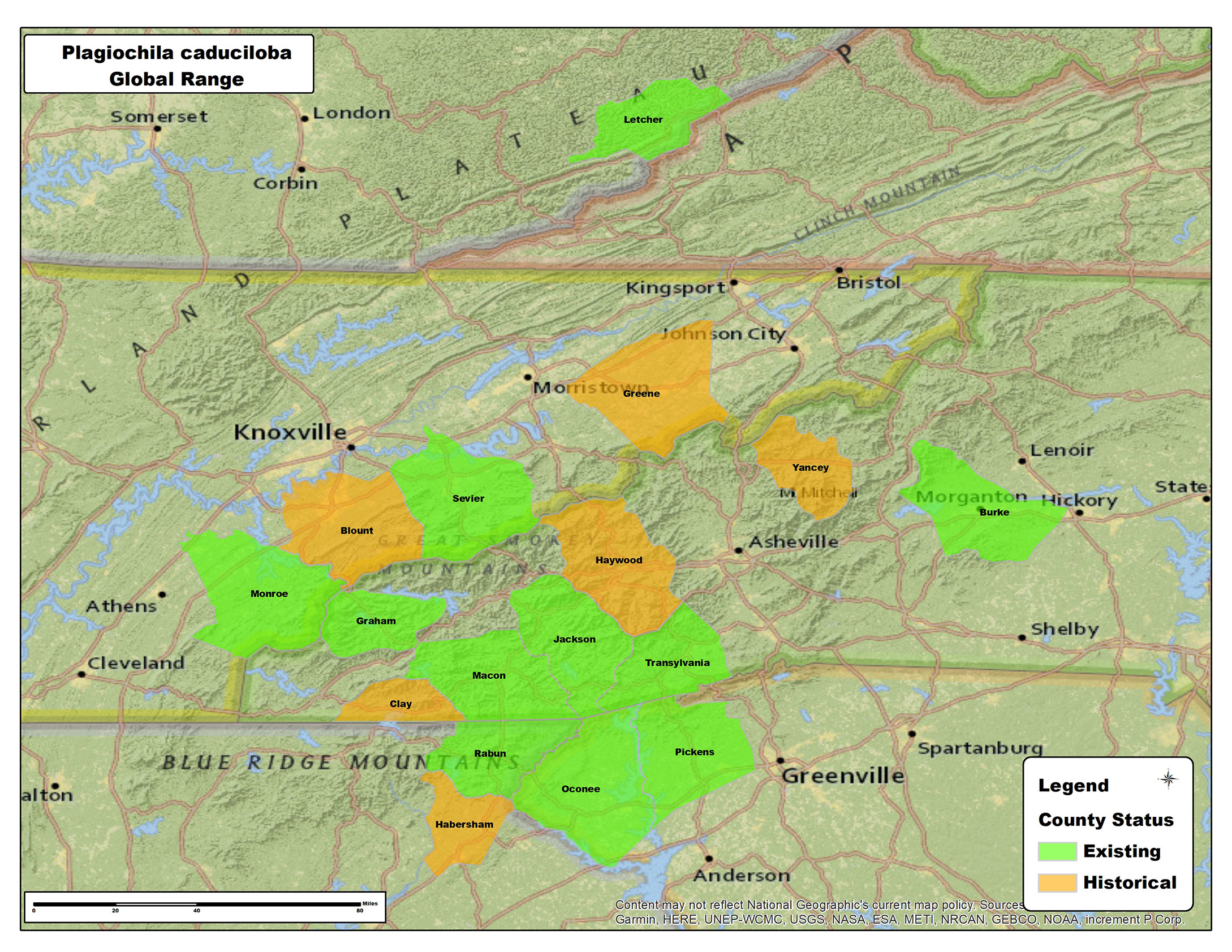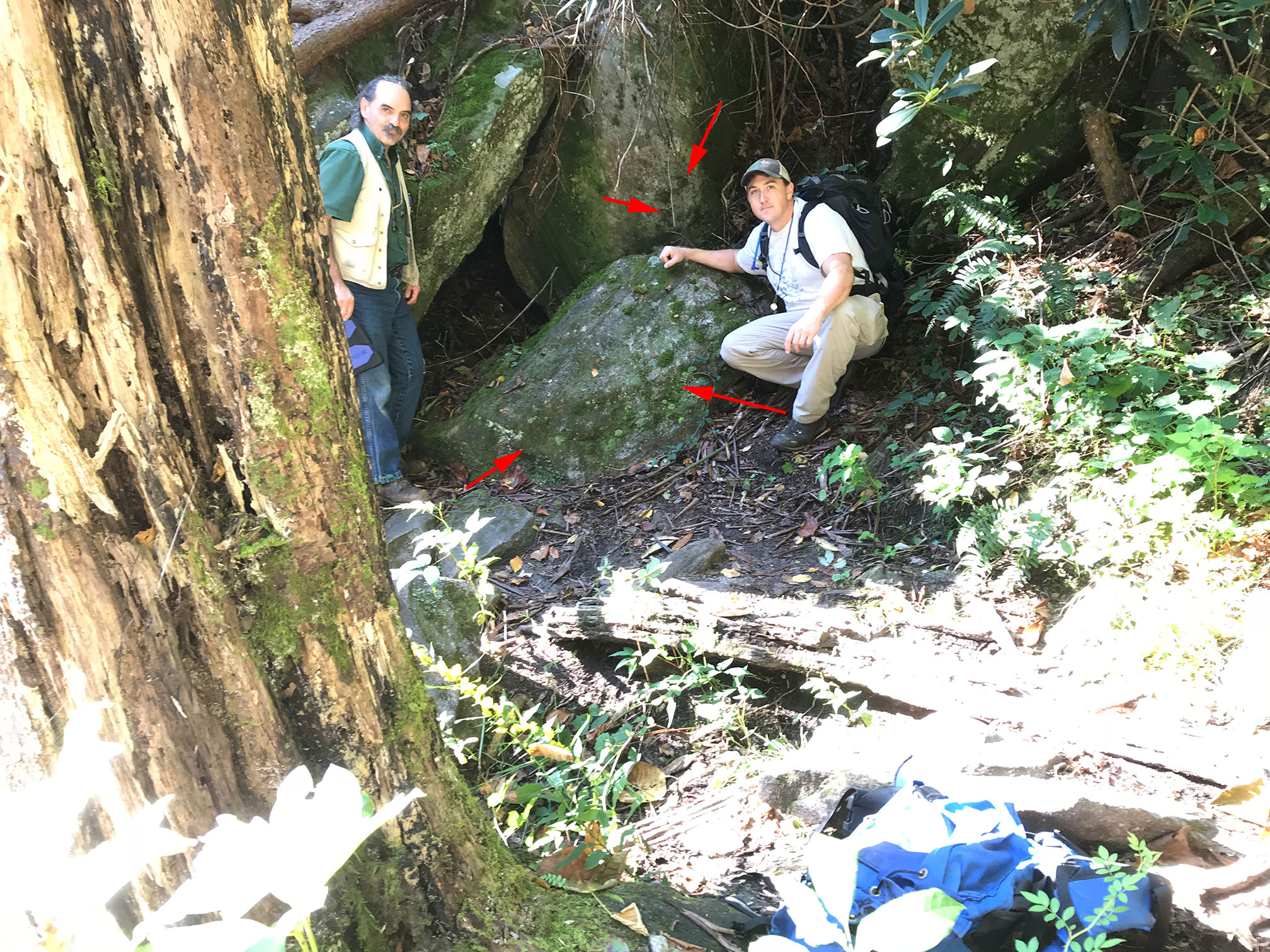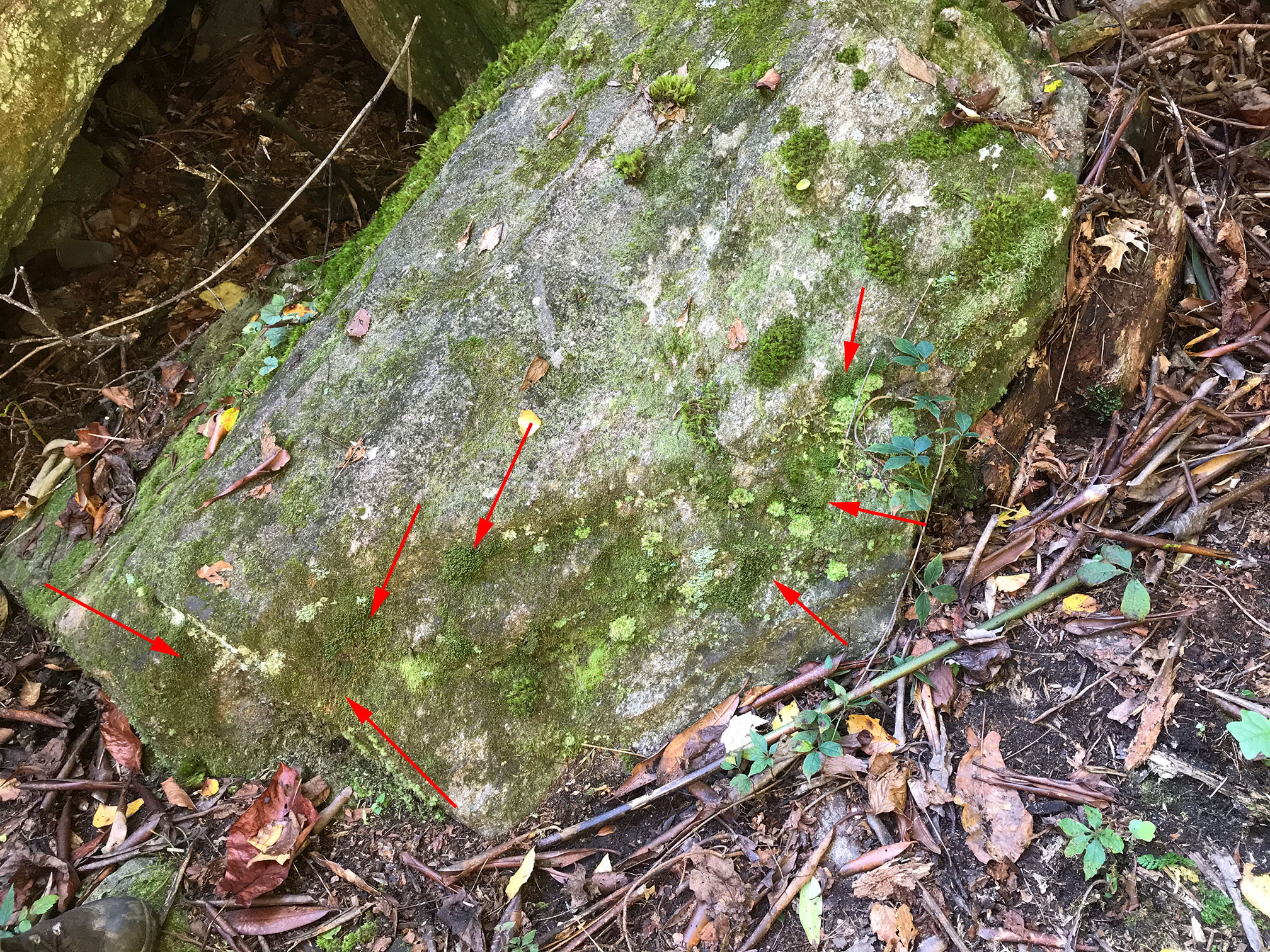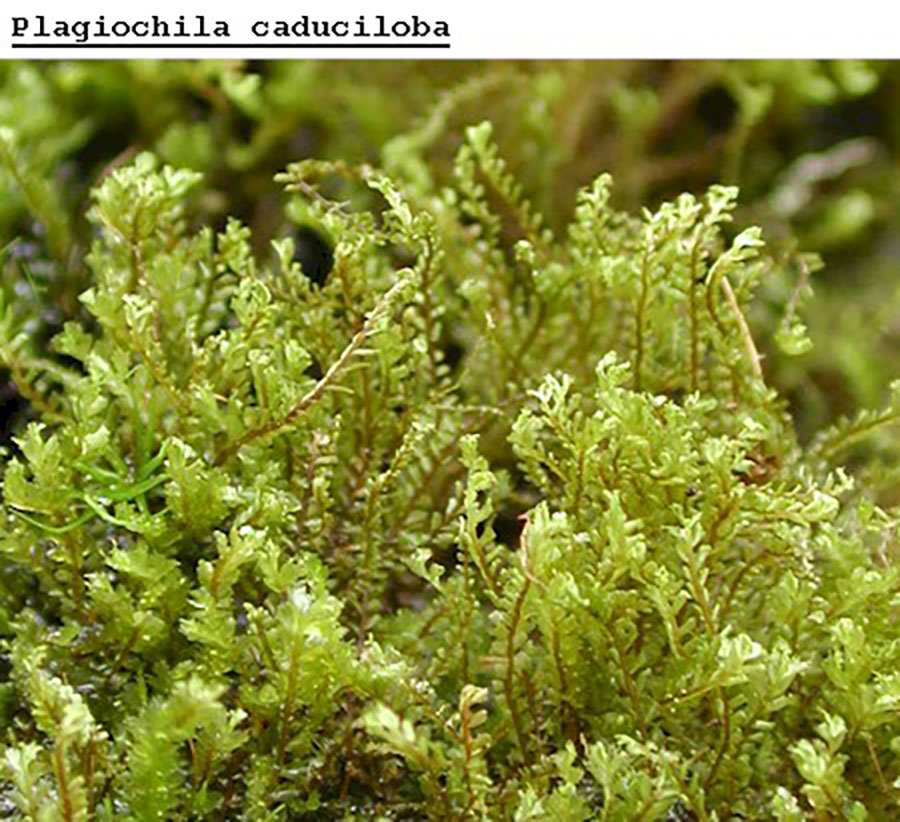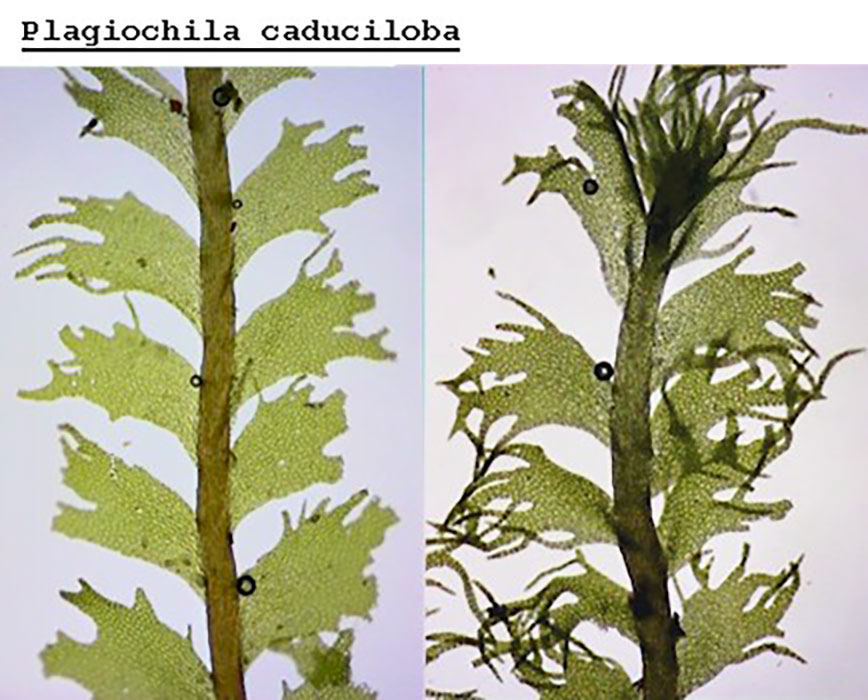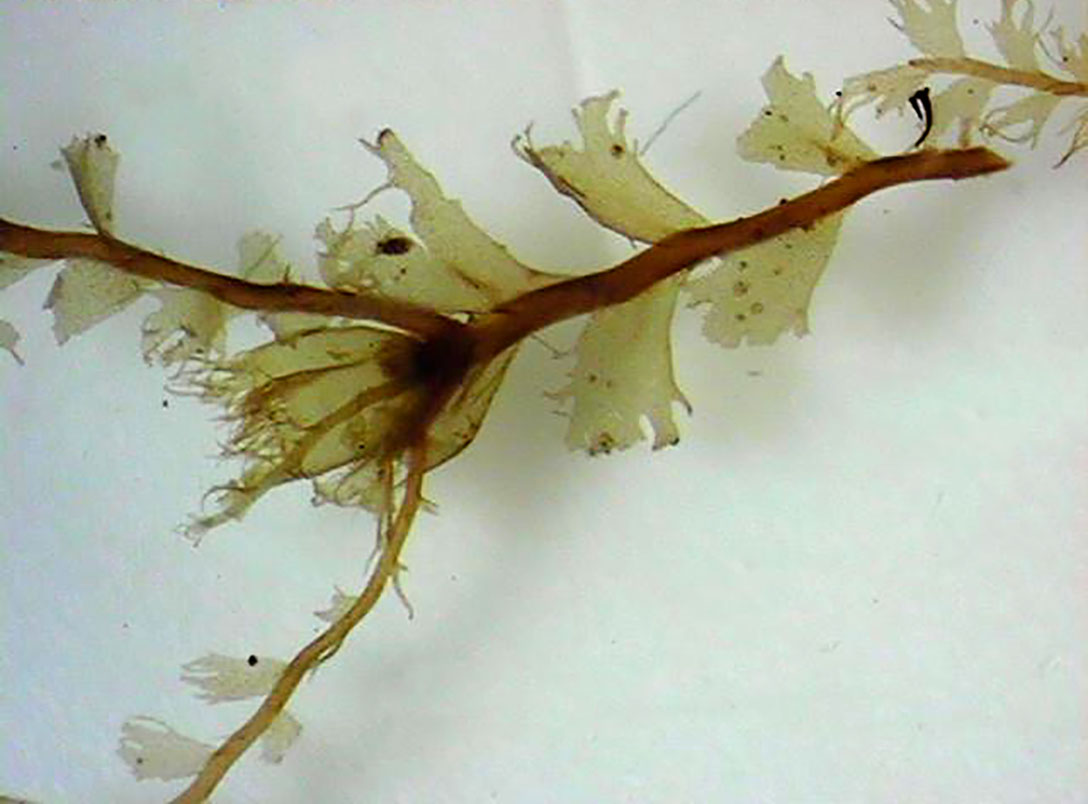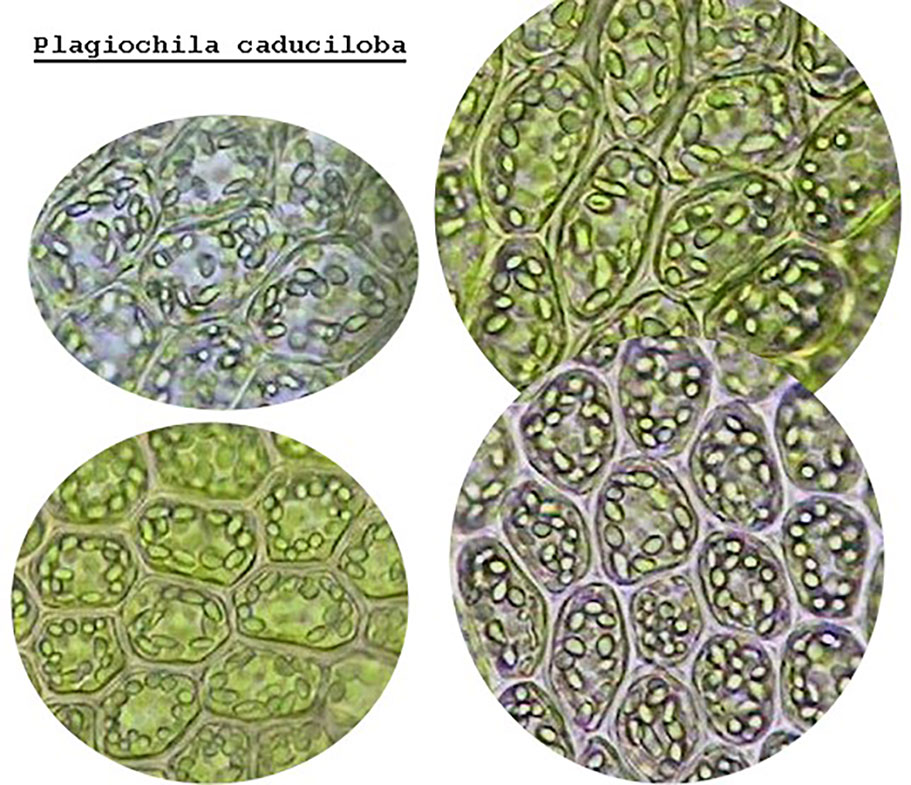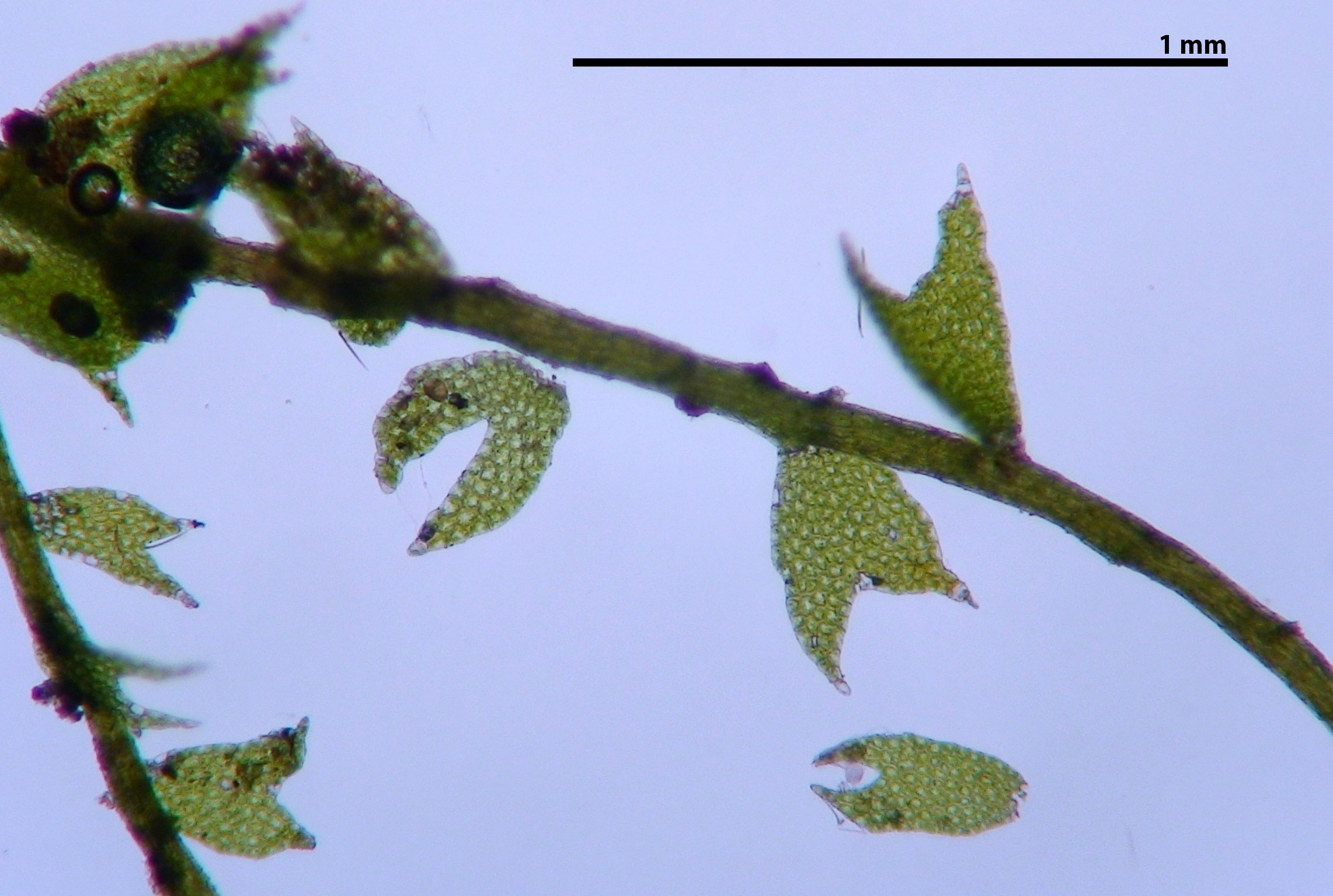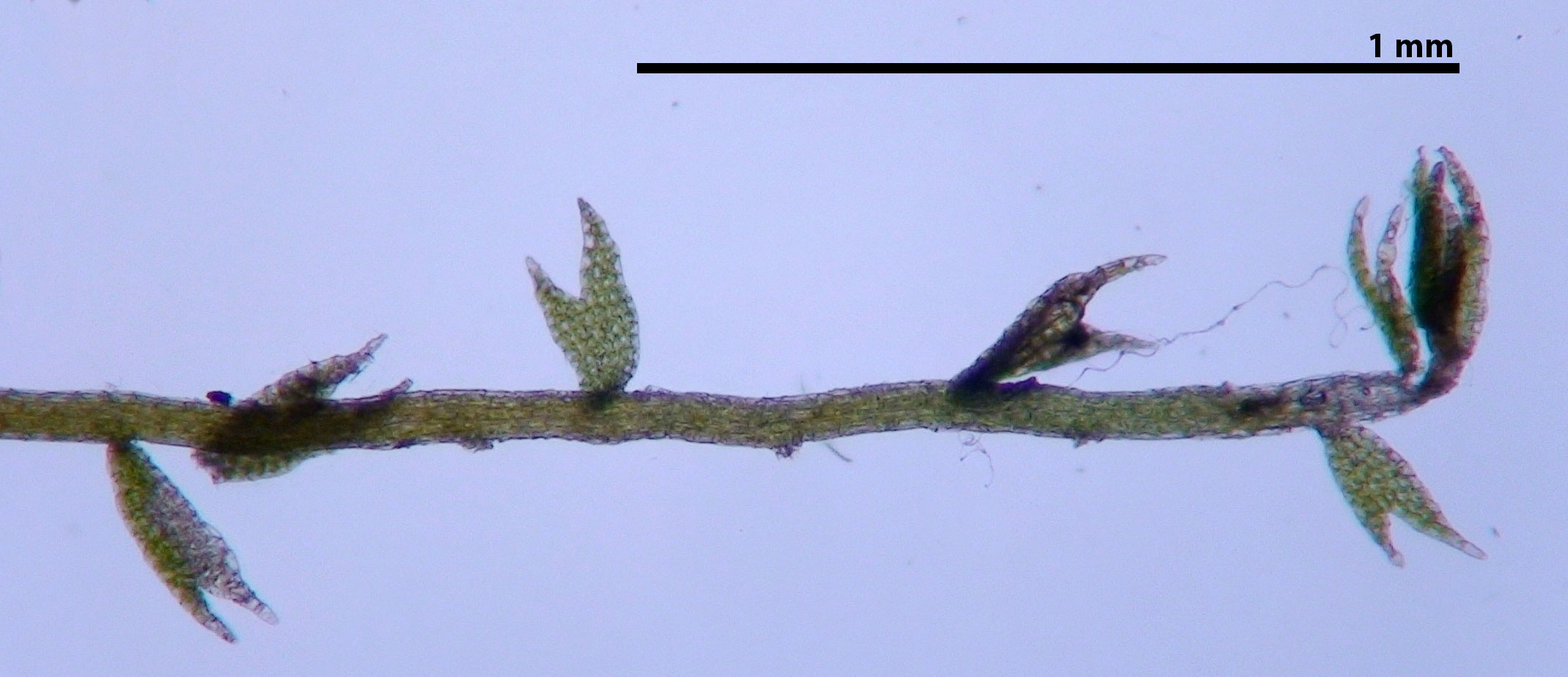Plagiochila caduciloba H.L. Blomq.
Family: Plagiochilaceae
Synonyms
none
NatureServe Conservation Status
G3
Distribution
Endemic to southeastern U.S.A. Georgia, Kentucky, North Carolina, South Carolina, Tennessee. Retricted to the Blue Ridge of the southern Appalachians with an outlying population to the north in the Cumberland Mountain section of the Appalachian Plateaus province in Kentucky.
Habitat
Canadian hemlock-cove hardwood forests with an understory of Rhododendron maximum. Occurring in ravines and moist slopes, usually near streams. At waterfalls, it may occur in protected rock recesses behind and beyond the abrasion of the curtain of falling water. Further from the water, it may occur under the protected ledges of cliff bases or large boulders. Typically in permanent shade in microhabitats with high humidity. Locally abundant in deep gorges where plants may tolerate minor exposure to direct sunlight. Occurring on sheltered rock faces, under rock ledges, and in rock crevices. Rarely on the lower trunks of yellow birch and limbs of Rhododendron maximum. Found once on the trunk of Ilex opaca. Low to high elevations (1000-6000 ft); rare above 4500 ft.
Plagiochila caduciloba typically avoids very wet substrates and the direct splash of spray zones. It has been found in very close proximity to the wet-loving species Acrobolbus ciliatus, Diphyscium cumberlandianum, Hookeria acutifolia, and Metzgeria leptoneura. It is considered a component of the spray cliff community (Zartman and Pittillo 1998). Like many cryptogams, P. caduciloba grows under conditions of prolonged humidity and low, albeit adequate, light levels. The low light may eliminate competition with more light demanding species. Many liverworts may occur under the same conditions including the following partial list of consociated species: Bazzania denudata, Blepharostoma trichophyllum, Harpalejeunea ovata, Herbertus, Lejeunea lamacerina subsp. geminata, L. laetivirens, Leucolejeunea clypeata, Lophocolea muricata, Microlejeunea ulicina, Plagiochila austini, P. porelloides, P. retrorsa, P. virginica, Radula obconica, R. sullivantii, and R. tenax. Notable tracheophyte associates include the fern gametophytes of Grammitis nimbata, Hymenophyllum tayloriae, Trichomanes intricatum, and Vittaria appalachiana.
Brief Description and Tips for Identification
Plants brownish to olive green, forming tufts or occurring intermingled with other liverworts or thinly scattered over the substrate. Individual shoots to 2 mm wide, usually smaller. Leaf apex often truncate, divided at the apex into short, irregular lobes or bearing numerous long, slender, fragile lobes that detach. Older leaves have an erose, truncate leaf apex following detachment of the fragile lobes. Depauperate plants with leaves predominantly bilobed and reduced in size. Oil bodies in leaf cells homogeneous, numbering 9-14 per cell.
Dioicous. Male plants and sporophytes unknown. Asexual reproduction by means of caducous leaf lobes.
"Aside from weak phenotypes, P. caduciloba can hardly be confused with any other plant" (Schuster 1980, p. 412). The multiple, slender leaf lobes that are soon caducous are unlike any other regional species.
Salient Features
- Slender, multiple leaf lobes detach in fragments resulting in erose, truncate leaf apices
- Oil bodies homogeneous, 9-14 per cell
- Shoots 2 mm or less wide
References
Blomquist, H. L. 1939. A new species of Plagiochila from the southern Appalachian Mountains. The Bryologist, 42(5), 113-117.
Davison, P. G., and Risk, A. C. 1992. Hepatics of Bad Branch Nature Preserve, Letcher County, Kentucky. Evansia, 9, 52-55.
Schuster, R. M. 1959. A monograph of the nearctic Plagiochilaceae Part II. Sectio Zonatae through Sectio Parallelae. The American Midland Naturalist, 62(2), 257-395.
Schuster, R.M. 1980. The Hepaticae and Anthocerotae of North America East of the Hundredth Meridian. Volume IV. Columbia University Press, New York.
Zartman, C. E., and Pittillo, J. D. 1998. Spray cliff communities of the Chattooga Basin. Castanea, 217-240.
Acknowledgment
Some text and images on this page were originally prepared for the Georgia Department of Natural Resources in 2010, contract number 605-090427 with Paul G. Davison and used here with permission.
Habitat

Plagiochila caduciloba
The trail seen at right is immediately above a foot bridge over a stream. The nose of this rock outcrop (at yellow arrow) supports a small population of P. caduciloba with numerous shoots of reduced size bearing predominantly bilobed leaves (see 5th image below). The brownish green patches on the left side of this outcrop support robust material of Plagiochila retrorsa.
Habit
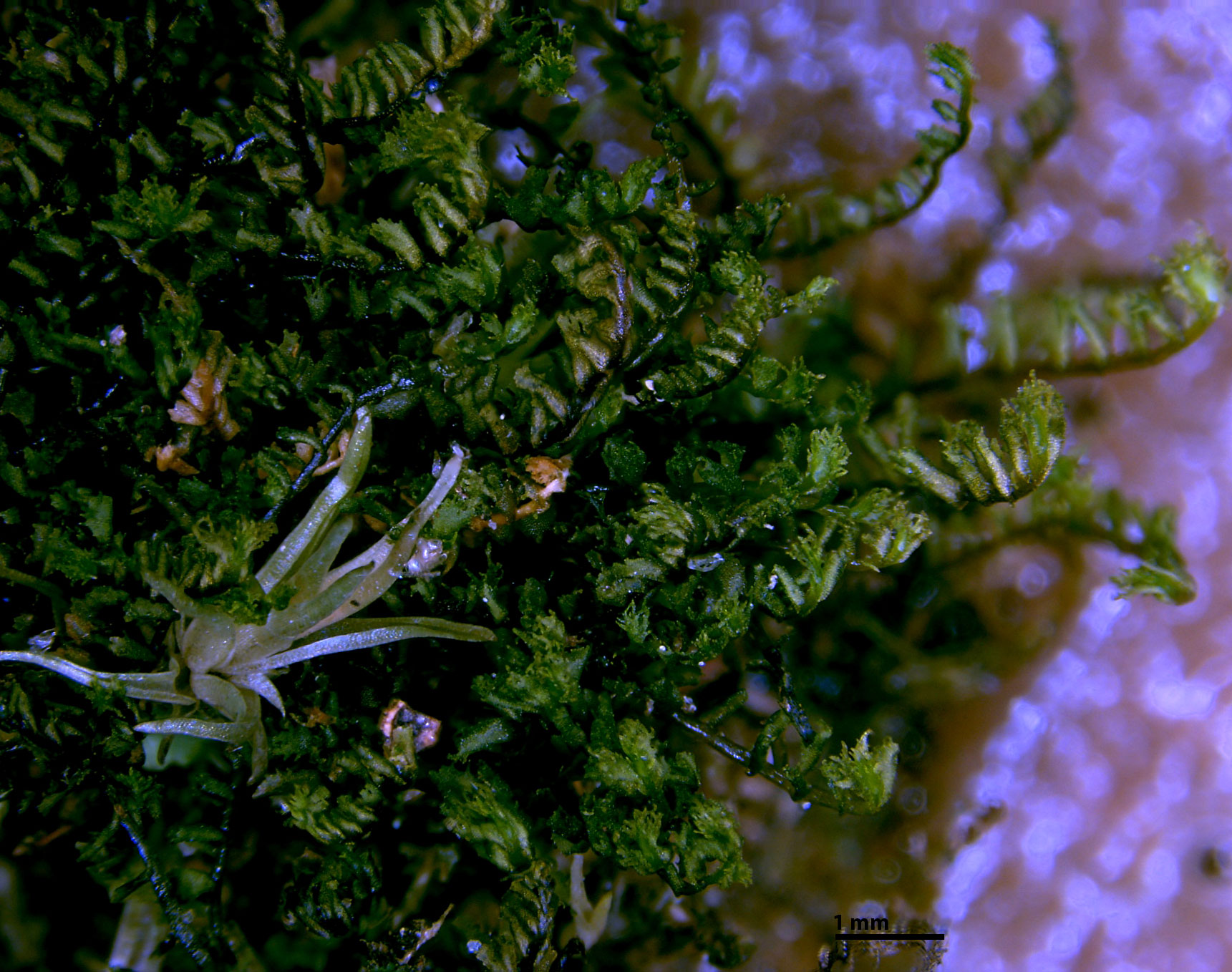
Plagiochila caduciloba
A tuft photographed on a brown paper towel. The white moss at lower left with subtubulose leaves is Leucobryum. This image reflects what it can be like trying to see the plants in their natural habitat. With sweat in your eyes, a foggy hand lens, or poor lighting, it is a challenge to get a glimpse of definitive characters. As when learning to field-recognize other species of bryophytes, identifications should be confirmed by lab study of a collected specimen.
Morphology
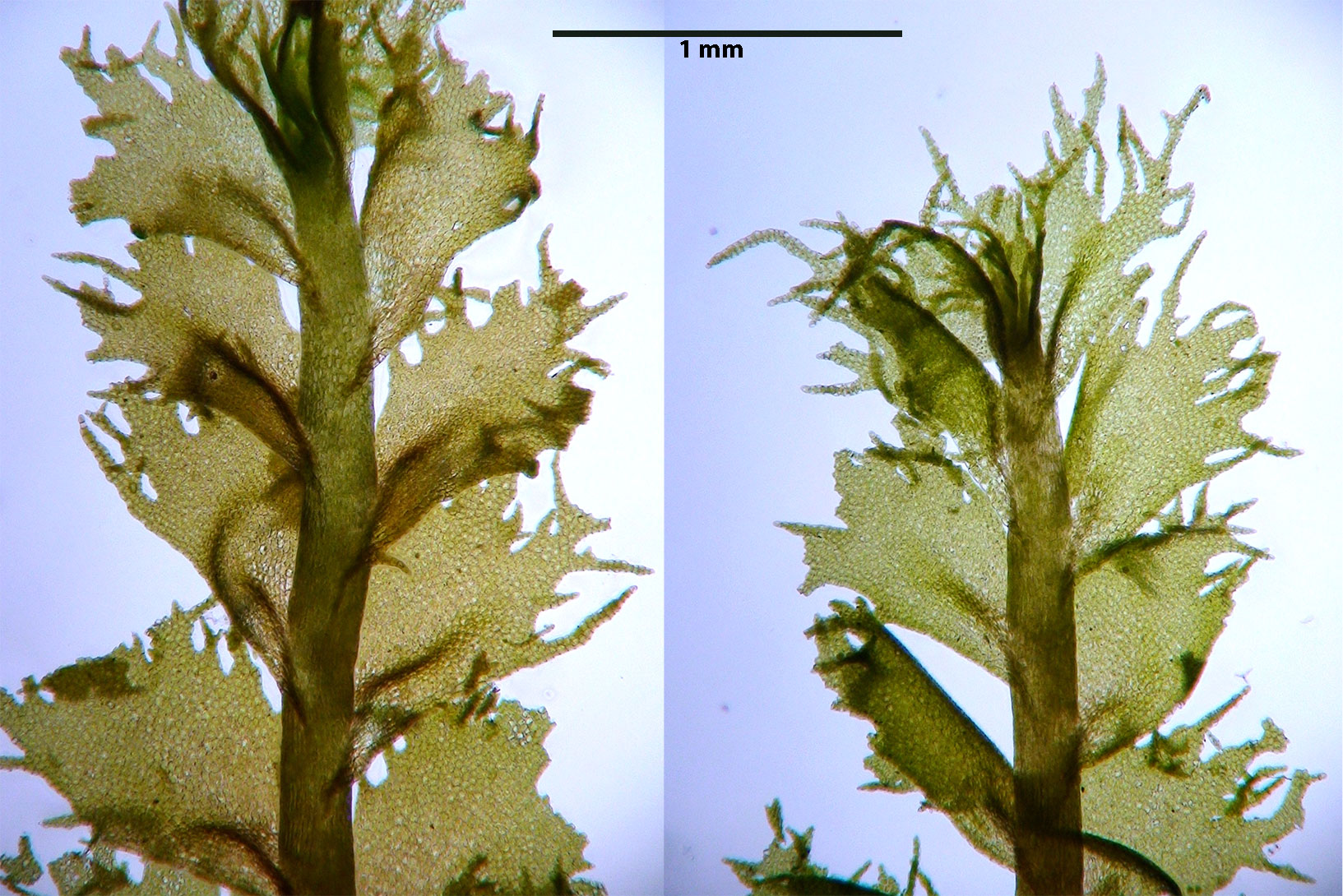
Plagiochila caduciloba
Dorsal view of two shoots. As in most liverworts, leaves occur in two rows, one on each side of the stem. A third row of reduced underleaves is present on the ventral side but the underleaves are composed of only a few cells and not likely to be seen except with special effort.
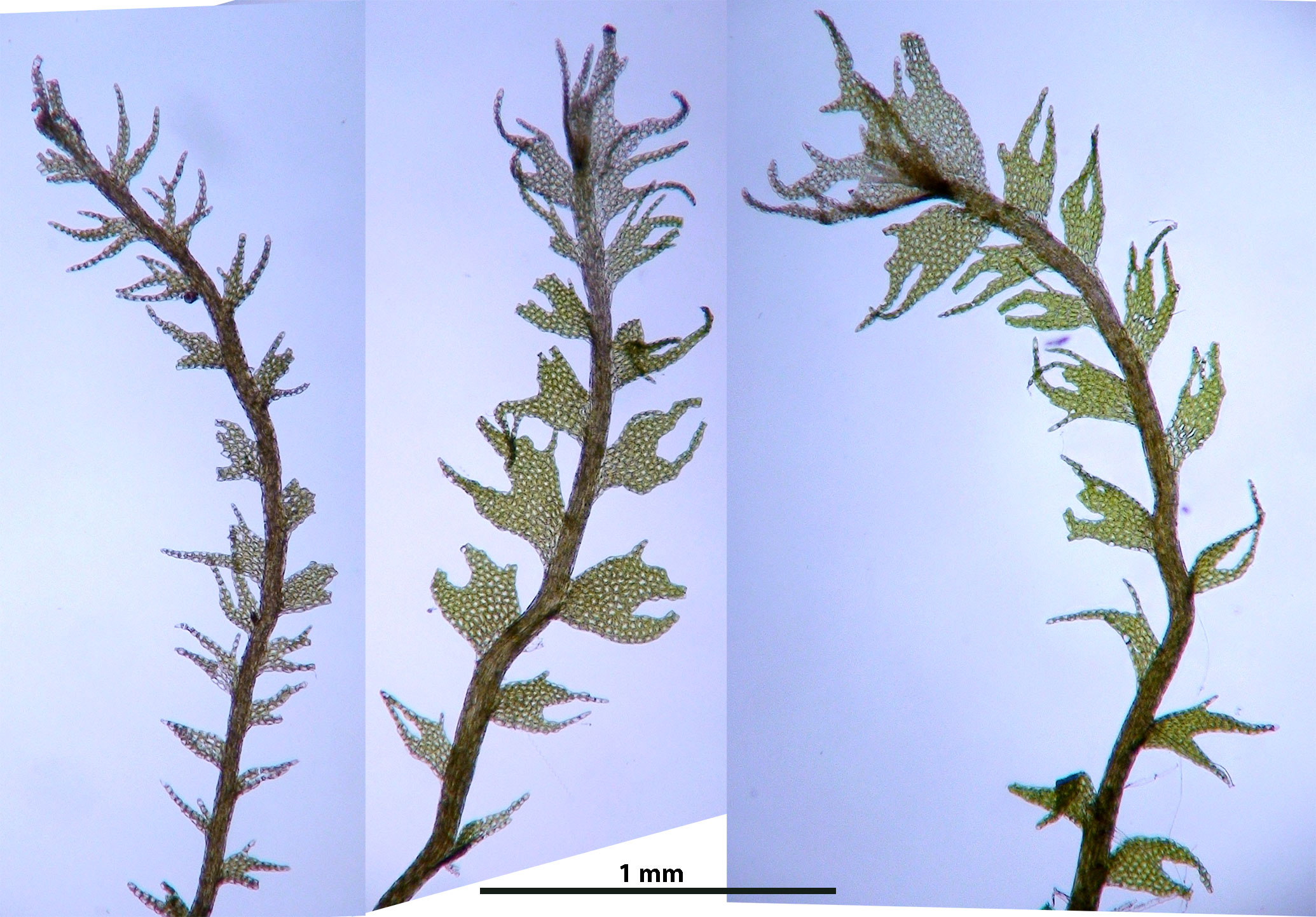
Plagiochila caduciloba
Small, predominantly bilobed expressions are not uncommon at the periphery of more robust material. Weak populations have a higher percentage of shoots with the morphology illustrated above. Even in this depauperate condition, the tiny leaves show evidence of producing caducous lobes.
